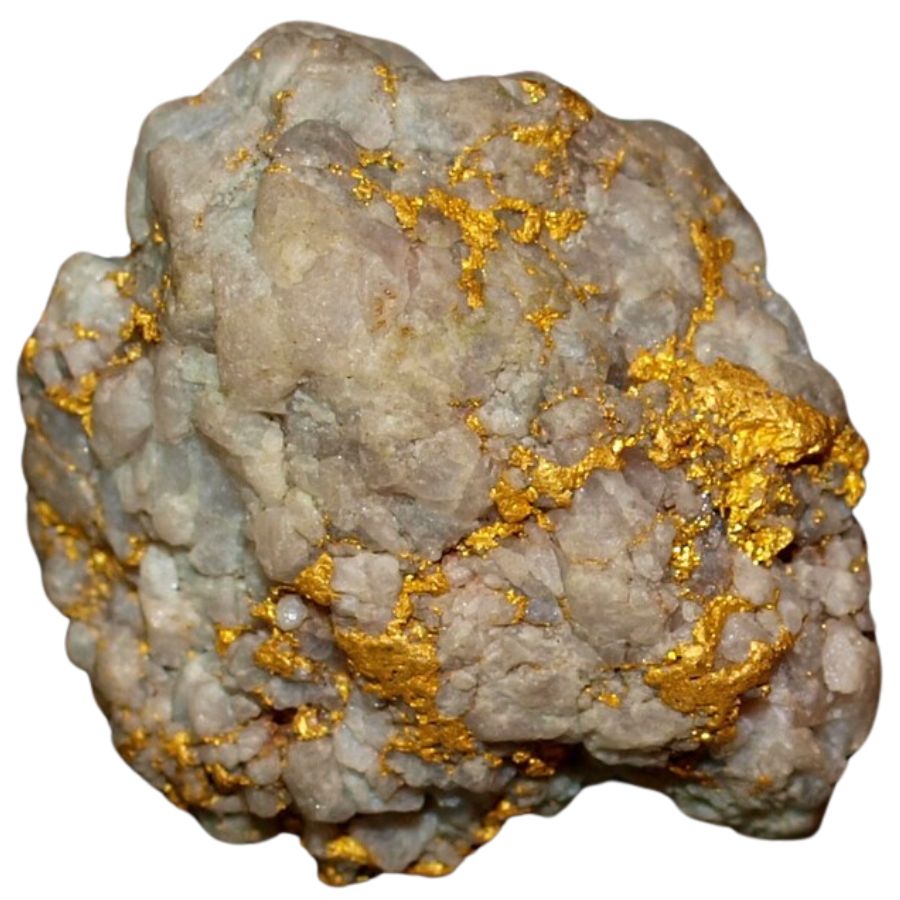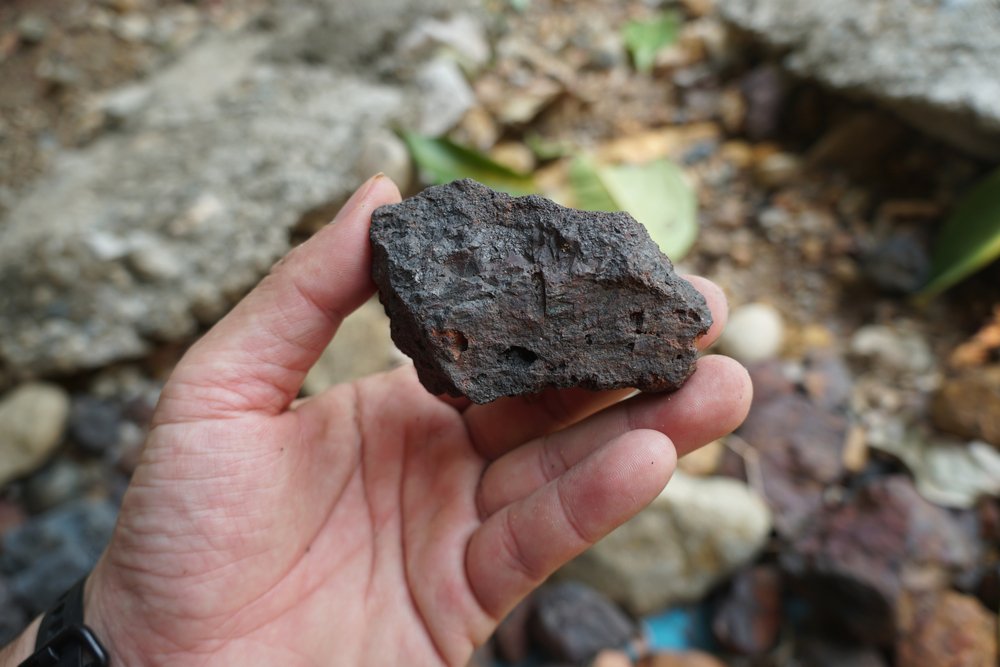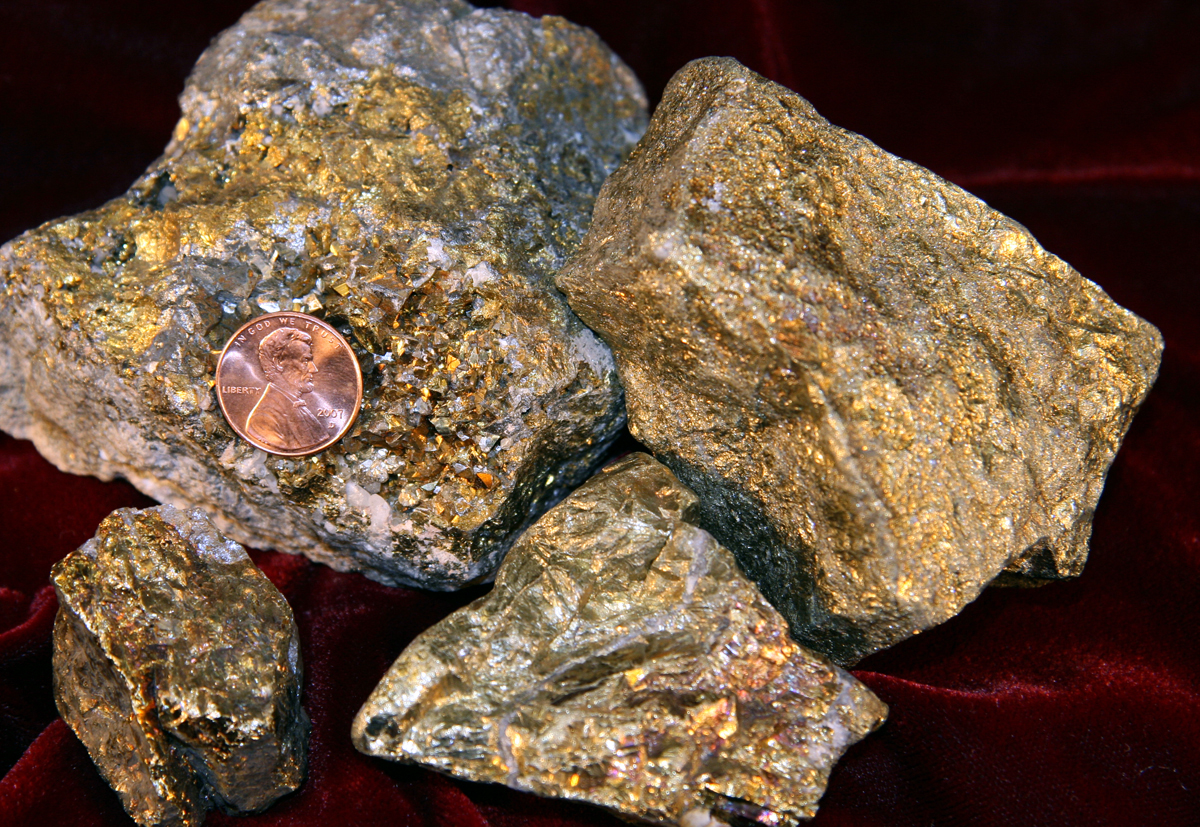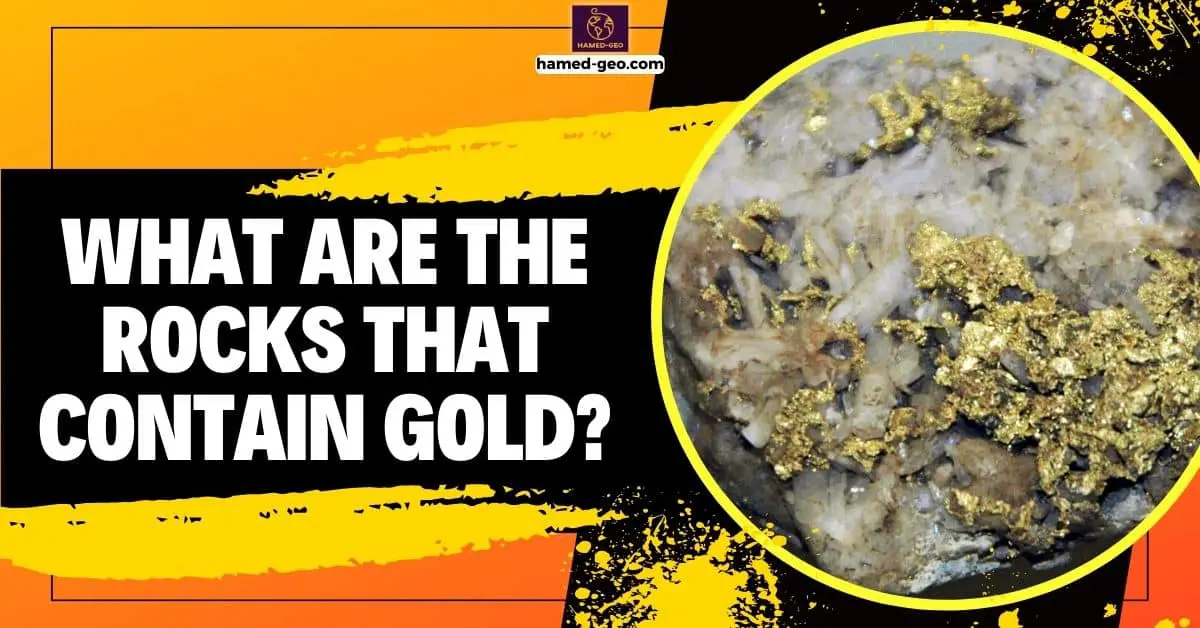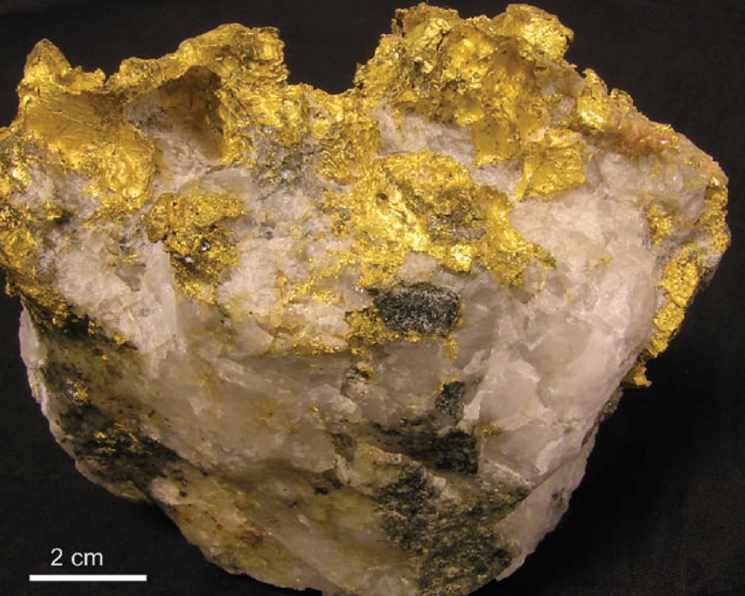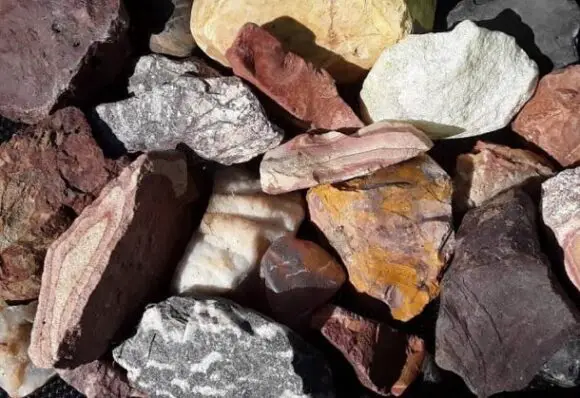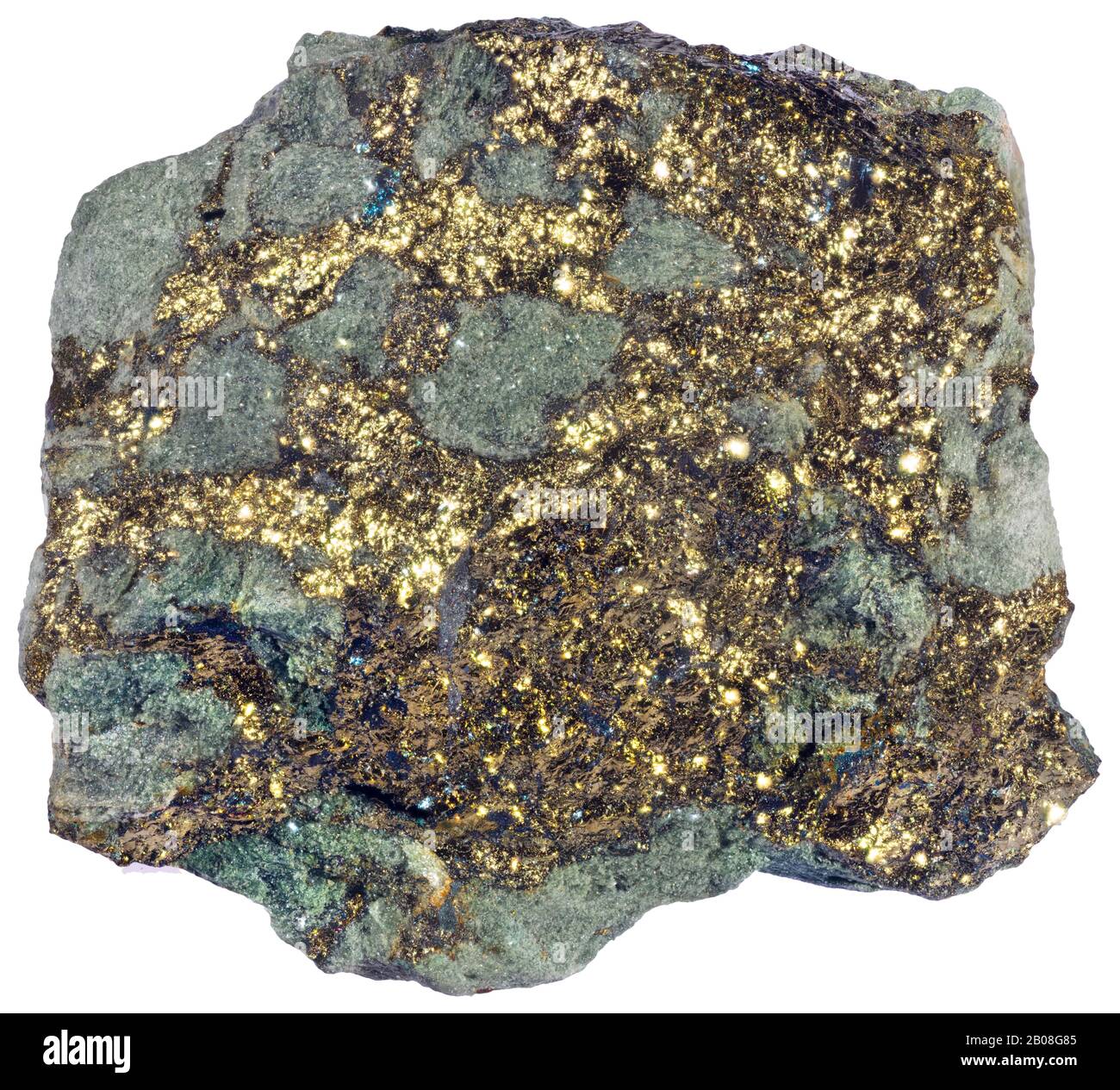What Rocks Have Gold In Them

Imagine standing at the edge of a vast, ochre-colored canyon, the desert sun beating down on your face. Dust devils dance in the distance, swirling like restless spirits, as you hold a heavy, unremarkable-looking rock in your hand. Could this be the one? Could this ordinary stone hold the glittering secret of gold within its seemingly dull exterior?
While the image of striking it rich with a single golden nugget might be more Hollywood than reality, the truth is that gold is indeed found in various types of rocks and geological formations. Understanding which rocks are most likely to contain gold, and how it got there in the first place, offers a fascinating glimpse into the Earth's dynamic processes and the enduring allure of this precious metal.
The Birth of Gold: A Geological Tale
Gold's journey to the rocks we might find it in today begins far beneath the Earth's surface. It's often linked to powerful volcanic activity and hydrothermal processes.
Deep within the Earth, immense heat melts rocks, creating magma. This magma, rich in various minerals, including gold, begins to rise toward the surface.
As the magma cools, it releases hot, chemically active fluids called hydrothermal solutions. These solutions act like geological veins, dissolving minerals and carrying them along through cracks and fissures in the surrounding rock.
Where to Look: Prime Gold-Bearing Rocks
The type of rock most associated with gold deposits is quartz. Quartz veins are often the telltale sign that gold may be present.
These veins are formed when hydrothermal solutions, carrying dissolved gold and other minerals, cool and solidify within fractures in the surrounding rock. The gold itself can occur as tiny particles within the quartz or as larger, visible nuggets.
Another rock type to consider is greenstone. Greenstone belts are metamorphic rocks formed from ancient volcanic activity and are often associated with gold deposits.
The hydrothermal fluids that accompanied the volcanic activity that created the greenstone often deposited gold within the rock structure. Additionally, Shale, a fine-grained sedimentary rock, can sometimes host disseminated gold deposits.
While shale itself might not be visually appealing, it can contain significant amounts of gold in tiny, almost invisible particles that have accumulated over time.
Finally, Conglomerate rocks, which are sedimentary rocks composed of rounded pebbles and larger fragments cemented together, can contain placer gold. This occurs when gold eroded from an original source has been transported by water and deposited in riverbeds, eventually becoming incorporated into the conglomerate.
Associated Minerals: Clues to Gold's Presence
Experienced prospectors don't just look for specific types of rocks; they also pay attention to associated minerals that often accompany gold deposits. One common association is with pyrite, also known as "fool's gold."
While pyrite itself is not gold, its presence can indicate that the conditions were right for gold deposition. Other minerals often found alongside gold include galena (lead sulfide), arsenopyrite (arsenic iron sulfide), and chalcopyrite (copper iron sulfide).
The presence of these minerals doesn't guarantee gold, but it certainly increases the likelihood. Examining the mineral composition of rocks can also give clues about the geological history of an area and where gold may have concentrated.
Beyond the Rocks: Placer Deposits
Gold isn't always locked tightly within solid rock. It can also be found in placer deposits, which are accumulations of gold in loose sediments like gravel, sand, and silt.
These deposits form when gold is eroded from its original source rock and transported by water. The heavier gold particles settle out in areas where the water flow slows down, such as riverbeds, bends in streams, and along the base of hills.
Placer mining, which involves separating gold from these loose sediments, is one of the oldest forms of gold mining. Think of images of prospectors panning for gold in streams – that's placer mining in action.
Modern Techniques and Technologies
While the image of a lone prospector with a pickaxe and pan is romantic, modern gold exploration relies on sophisticated techniques and technologies. Geologists use geochemical analysis, geophysical surveys, and satellite imagery to identify potential gold-bearing areas.
Drilling and core sampling are used to obtain subsurface rock samples for analysis. These samples are then analyzed in laboratories to determine the gold content and the associated minerals present.
Modern mining operations also employ advanced extraction methods, such as cyanide leaching, to recover gold from ore. While these methods are effective, they also raise environmental concerns, and responsible mining practices are essential to minimize the impact on the environment.
The Enduring Allure of Gold
Gold has captivated humanity for thousands of years, serving as a symbol of wealth, power, and beauty. From ancient civilizations to modern-day investors, gold's intrinsic value has remained remarkably consistent.
The quest for gold has driven exploration, shaped economies, and inspired countless stories of adventure and fortune. Even today, with all our technological advancements, the thrill of discovering gold remains a potent force.
Understanding the geology of gold, the rocks it's found in, and the processes that create these deposits allows us to appreciate not only the rarity and value of this precious metal but also the incredible forces that have shaped our planet. So, the next time you find yourself in a rocky landscape, take a closer look. That seemingly ordinary rock might just hold a hidden treasure, a tiny piece of Earth's history waiting to be discovered. Happy prospecting!

